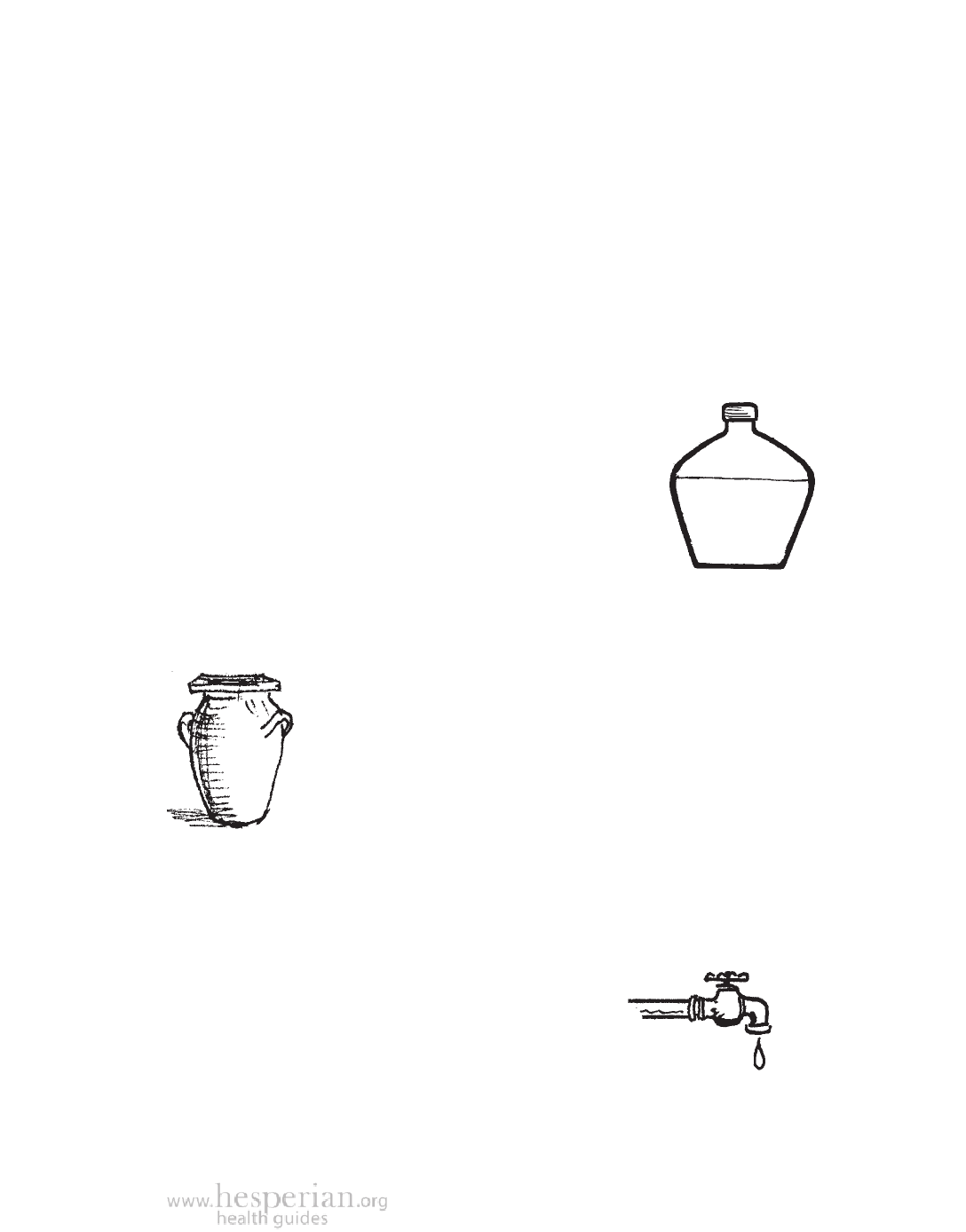
Store Water Safely
91
Keeping water containers clean
Stored water can become unsafe when it is touched by people with dirty
hands, when it is poured into a dirty container, when dirt or dust gets in the
water, and when dirty cups are put into it. To prevent water from becoming
unsafe at home:
• Wash hands before collecting and carrying water.
• Clean and cover the container that is used to carry water.
• Regularly clean the container where water is stored in the house.
• Keep water containers off the floor and away from animals.
• Pour water out without touching the mouth
of the container, or use a clean, long-handled
dipper to take water out of the container.
• Clean all cups that are used for drinking.
• Never store water in containers that have been
used for pesticides or toxic chemicals.
• If possible, do not treat more water than you
need for short-term use. For drinking and
cooking, that is usually less than 5 liters for
each person each day.
Narrow mouthed
Cover tanks and cisterns
Covered tanks and cisterns are
containers are safest for
storing water.
safer for storing water than open
ponds because mosquitoes and snails cannot live in closed
tanks. Covering storage tanks also reduces water loss from
evaporation. If water is stored in ponds or ditches, digging
them deeper will expose less water to the air and so will
reduce the amount lost to evaporation.
Cisterns should be placed as close as possible to where
the water will be used.
Fix leaks
A lot of water can be lost through leaks, evaporation, and seepage. To save
water, make sure taps are closed when they are not in use. Fix or replace
broken or leaky pipes and cracked tanks as soon as
leaks are found. Leaks are also a sign of possible
contamination, because germs and dirt enter the
cracks in tanks and pipes.
A Community Guide to Environmental Health 2012